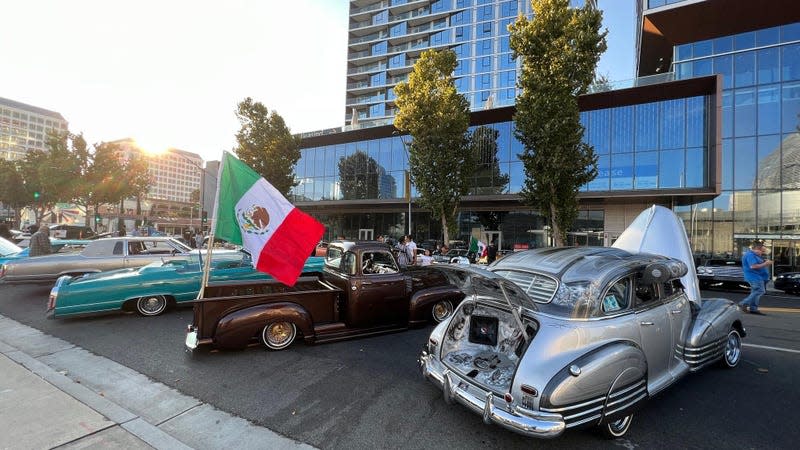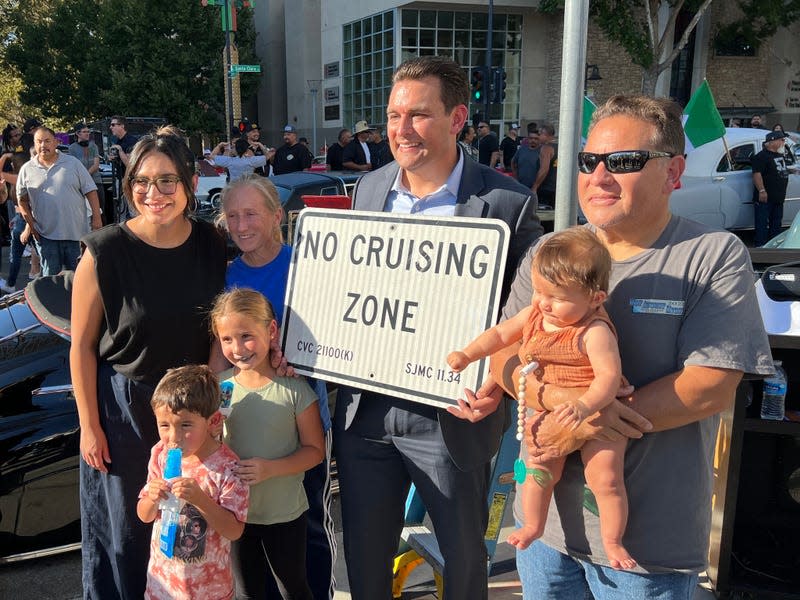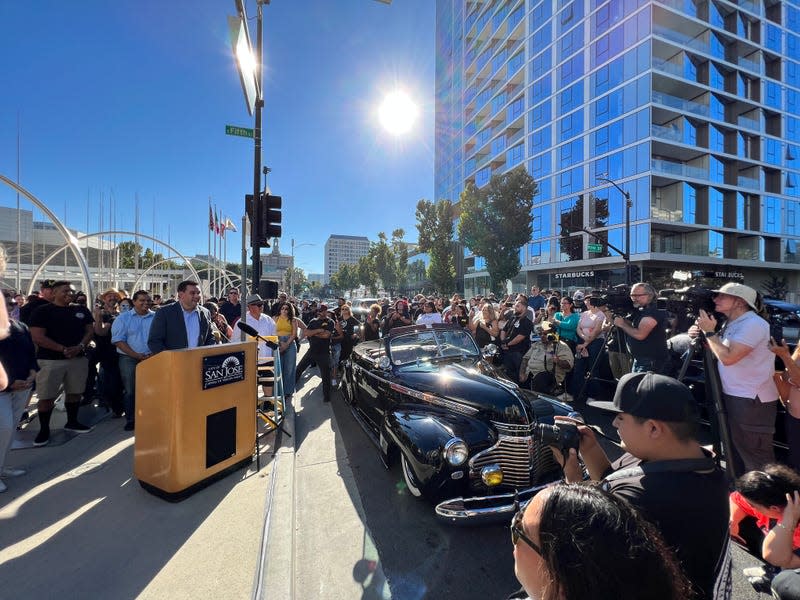San Jose Celebrates the Return of the Lowriders

Lowriders are making their way back to San Jose, officially, and without fear of legal repercussions after being banned in the city for 36 years. Led by council member Raul Peralez, the San Jose city council recently voted to repeal a 36-year ban that established “No Cruising” zones throughout the Bay Area in 1986, which was ostensibly about curbing gang violence and related crimes, but was little more than an excuse to stop Mexican drivers of Chevy Impalas, Bel-Airs and Chevelles.
The history of lowriders in San Jose, and of the Mexican American community that created them in the aftermath of World War II, is fraught with tension but after more than three decades the city finally readmitted the distinctive custom cars. I encourage you to go read this new article from Atlas Obscura about the return of these machines painted candy apple red, and lovingly modified to drive low and slow on whitewalls and spoked wheels. Even if you’re not a born fan of lowriders (like myself) at least it’s clear that the love owners feel toward these classics is the very definition of car enthusiasm.
Read more
Cold Frisco Nights 2021 - Bay Area Lowriding
The Atlas article talks about how lowriders became cultural icons in California and the rest of the U.S., if not the world. But the best part is that the affinity many people in San Jose felt for the cars is not stuck in the past. Lovers of the pioneering art cars bided their time, keeping the culture alive through clubs and meets that weren’t illegal but lacked the “low and slow” cruising that made the cars famous in the first place.
Indeed, the argument that Raul Peralez relied on to call for repeal of the specific section of the California vehicle code — which “No Crusing” road signs famously referenced — was some 20 years in the making: Peralez argued that cruising in your car is hardly enough to make someone a criminal, and, yet, that was the mandate that boxed in the lowriders until they were relegated to parking lots:
Though the ban passed in the mid-1980s, Peralez remembers cruising with his car club in the late ‘90s. But things changed when the police began closing certain streets. “You couldn’t really enjoy going out for a quick cruise as you could in the past,” says Peralez.
Peralez says that the ban was being used as an excuse to pull over anyone who looked like they were part of a certain culture. “The focus should have been and still should be on the criminal activity that may actually happen,” he says. “Not the act of driving your classic car slowly through the streets.” [...]
Peralez had realized that it had been more than 20 years since the police had actually issued a ticket for cruising, proof that the law wasn’t really about prohibiting the harmless activity; it simply gave police an excuse to stop and search lowriders. He says that since the ordinance has never been strongly enforced, “it is just more evidence that cruising was never the problem.”
Officials in bygone city councils conflated the lowrider scene with criminal activity, but, in reality, customizing the Chevys and Pontiacs with an emphasis on art and aesthetics was mostly a response to hot rod and tuning culture, which was expensive and beyond the reach of many Latinos who loved cars.
It’s a fascinating visual history that’s worth reading in its entirety over at Atlas Obscura. Not only because it talks about these awesome cars, but because it has a happy ending, with the last “No Cruising Zone” road sign ceremoniously taken down earlier this year.


More from Jalopnik
Sign up for Jalopnik's Newsletter. For the latest news, Facebook, Twitter and Instagram.

 generic
generic 